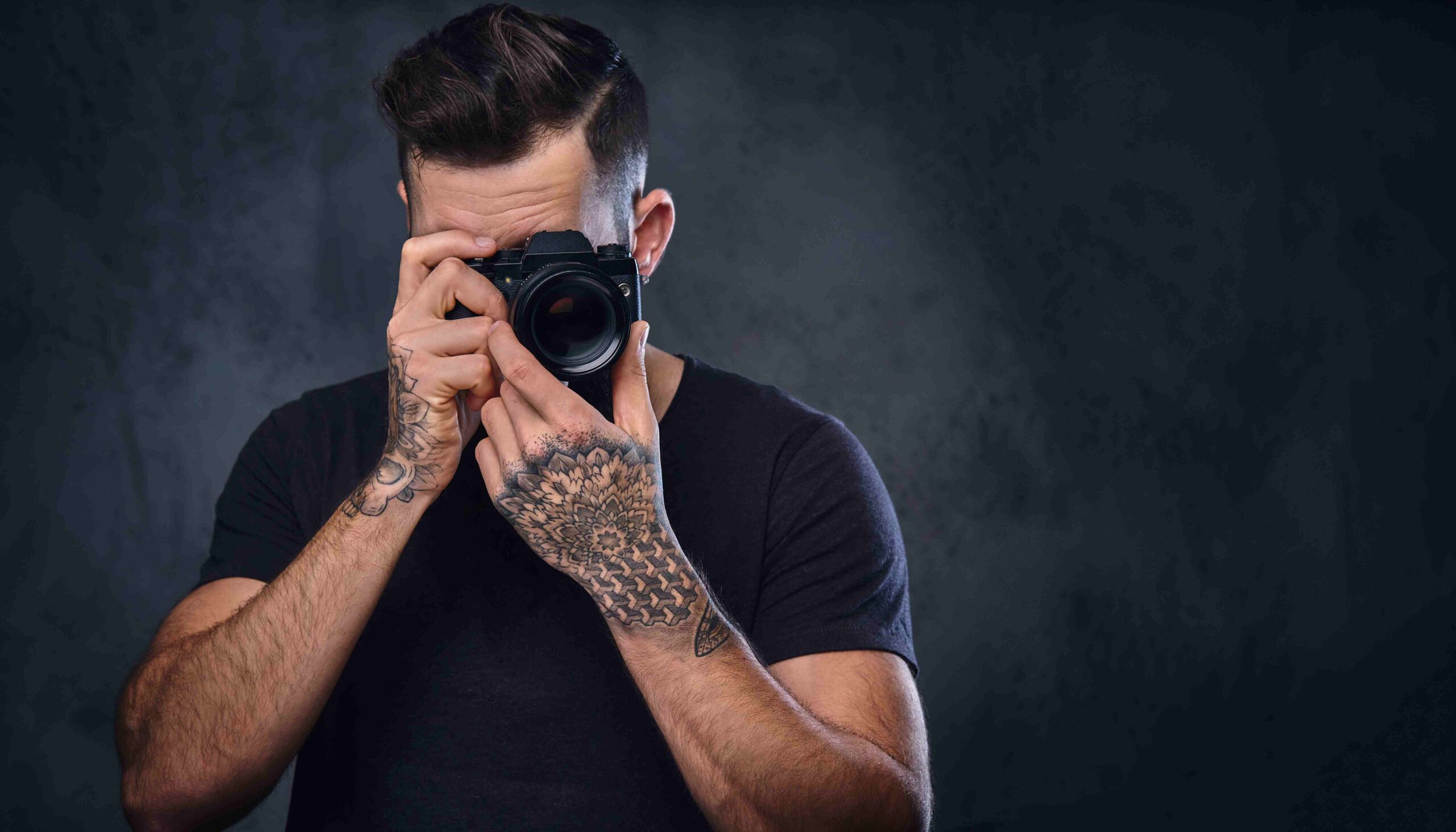In this world of technological development and innovation, there is a specific genre of tech that caters to photographers, yes its cameras! There is a multitude of cameras available, each catering to the different needs, preferences, and skill levels of photographers. Understanding the different types of cameras is essential for selecting the right tool for your photographic journey. Sooo lets talk about camera fundamentals simplified. We have lot to cover.
We will discuss below the 4 different types of cameras that we have in the market today.
Types of Cameras
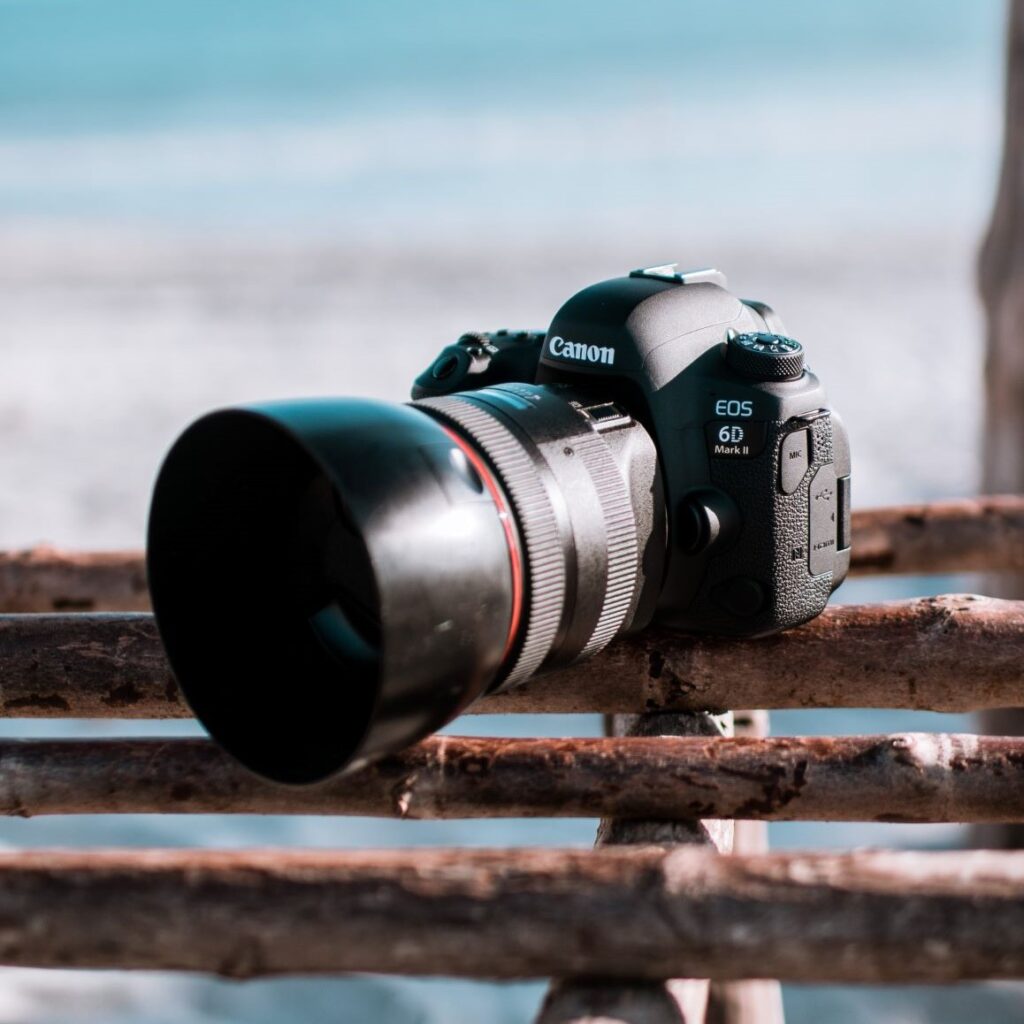
- Digital Single-Lens Reflex (DSLR) – cameras have long been favored by photography enthusiasts and professionals alike for their great image quality and versatility. These cameras employ a unique optical system where light passes through the camera’s lens, bounces off a mirror, and finally reaches the viewfinder. When the shutter button is pressed, the mirror flips up, allowing light to hit the camera’s image sensor directly, capturing the desired image. This intricate mechanism provides a real-time optical view through the viewfinder, enabling photographers to precisely compose their shots.
One of the standout features of DSLR and Mirrorless cameras is their interchangeability of lenses, giving photographers the freedom to choose from a big variety of lenses tailored to different scenarios. Whether it’s capturing epic landscapes with a wide-angle lens, get into those detail shots with macro lens, or getting up close to distant subjects with a telephoto lens, the versatility of DSLRs give photographers the option to achieve their creative visions.
Additionally, DSLRs offer extensive manual control over settings such as aperture, shutter speed, and ISO, providing photographers with the flexibility to capture a wide range of subjects and craft their desired art. Despite the rise of mirrorless cameras, DSLRs remain a powerful choice for those who prioritize optical viewfinders, robust build quality, and a deep ecosystem of lenses and accessories.
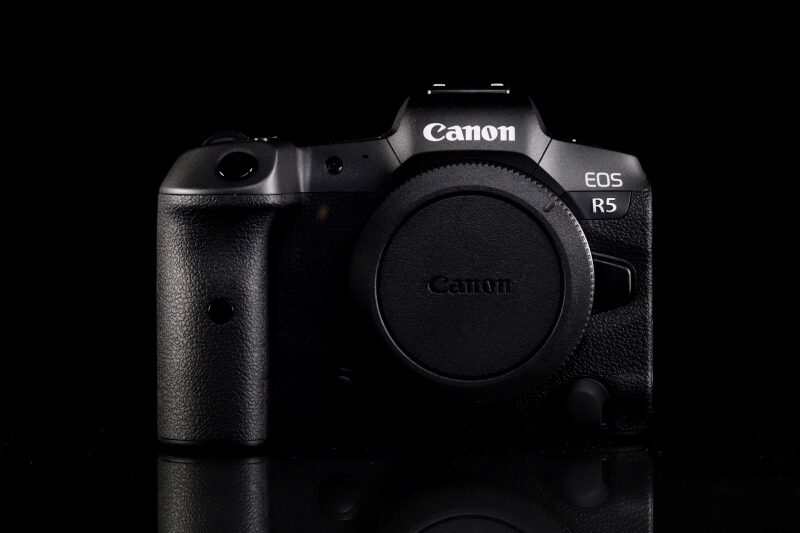
- Mirrorless Cameras – are a modern evolution in photography, the latest tech designed to offer the advantages of traditional DSLRs while eliminating the bulky mirror and optical viewfinder system. Unlike DSLRs, which employ a mirror to reflect light into an optical viewfinder, mirrorless cameras rely on a digital display or electronic viewfinder to showcase a real-time digital preview of the image. This design leads to a more compact and lightweight camera body, making mirrorless cameras smaller and more convenient for photographers on the go.
One of the defining and awesome characteristics of mirrorless cameras is their direct exposure to light on the image sensor, as there is no mirror mechanism in place. This enables some mirrorless models to achieve faster burst rates and quicker autofocus performance, as they can continually capture images without the interruption of a flipping mirror.
With a wide range of lens options available, mirrorless cameras cater to most if not all photography styles and preferences. Additionally, their electronic viewfinders offer benefits like real-time exposure previews (my favorite feature), focus peaking, and digital overlays that display vital shooting information, enhancing the overall shooting experience. As technology continues to advance, mirrorless cameras have become THEE choice for photographers seeking a blend of portability, advanced features, and exceptional image quality in a single package.

- Point-and-shoot cameras – often referred to as compact cameras, are simple and convenient devices designed for easy photography. These cameras are aptly named because they’re user-friendly and require minimal setup. With automatic settings handling most technical aspects like focus, exposure, and flash, users can simply “point and shoot” to capture their desired images. These cameras are compact in size, making them highly portable and suitable for everyday moments, vacations, and casual photography.
Point-and-shoot cameras are great for those who want hassle-free photography without the need to adjust various settings. They’re compact enough to slip into a pocket or bag, ensuring you’re always ready to capture spontaneous scenes. While they may not offer the manual control or advanced features of other camera types, point-and-shoot cameras are an accessible option for capturing memories without the complexity of larger, more intricate camera systems.
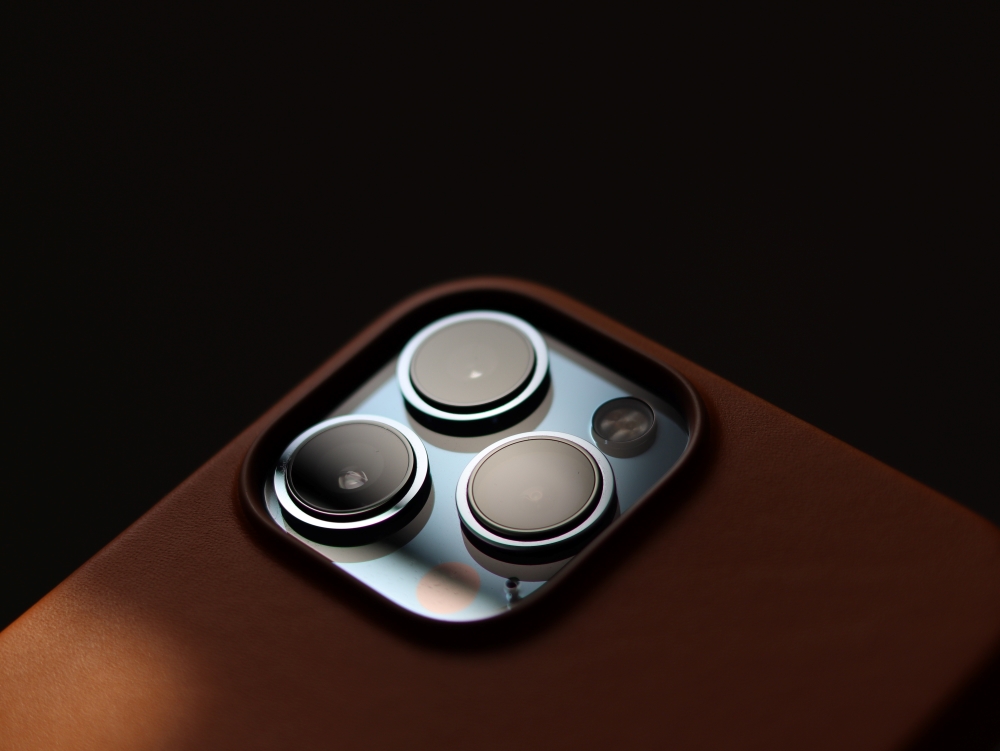
- Mobile phone cameras have revolutionized photography by putting a camera in everyone’s pocket. These cameras are an integral part of smartphones, allowing users to easily capture moments without carrying an additional device. With automatic settings and user-friendly interfaces, and AI, taking photos with mobile phone cameras is as simple as pointing and tapping the screen.
Mobile phone cameras are incredibly convenient for capturing daily life, sharing moments instantly, and even experimenting with creative photography. While they might not match the image quality of dedicated cameras in all situations, they excel in their accessibility and versatility, making them an essential tool for capturing memories and sharing experiences with friends and family.
A famous photographer once said:
” The Best Camera is the One With You “
– Chase Jarvis
For more inspirational quotes check out our 20 quotes that inspire you as a photographer article.
Camera Fundamentals Simplified – Camera Anatomy
To unlock the magic of photography, it’s essential to understand the basic anatomy of your camera. Think of your camera as a tool with various components, each playing a crucial role in capturing the perfect shot.
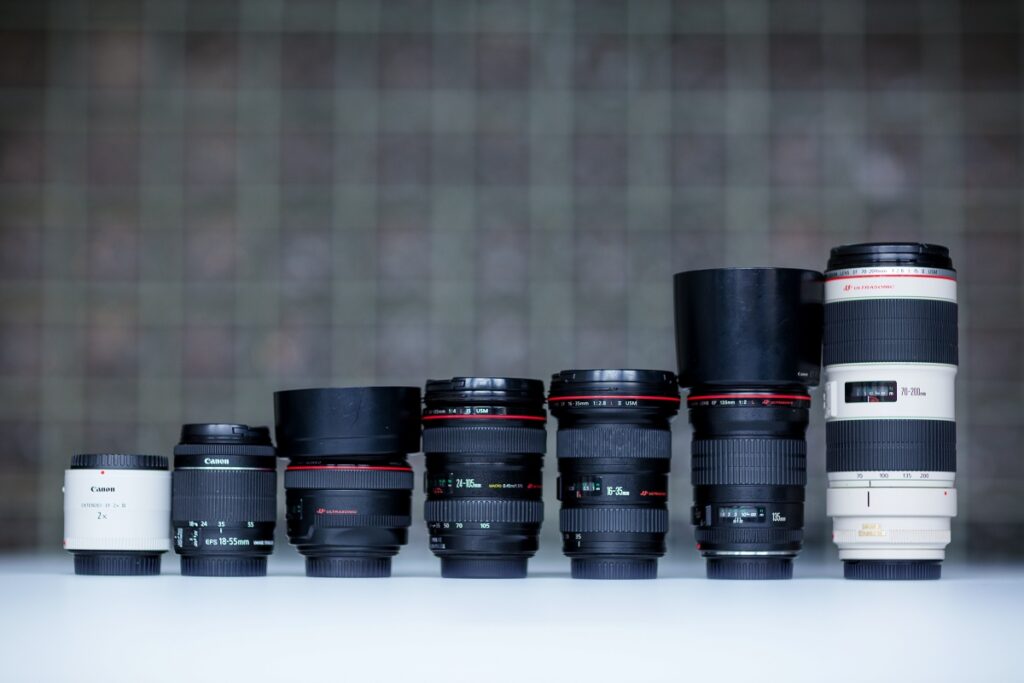
- Lens: There are a wide variety of lenses as shown above. The lens is like the eye of the camera. It focuses light onto the camera’s sensor, determining how much of the scene is captured. Different lenses offer varying perspectives, from wide-angle to zoom, allowing you to get up close or capture expansive landscapes.
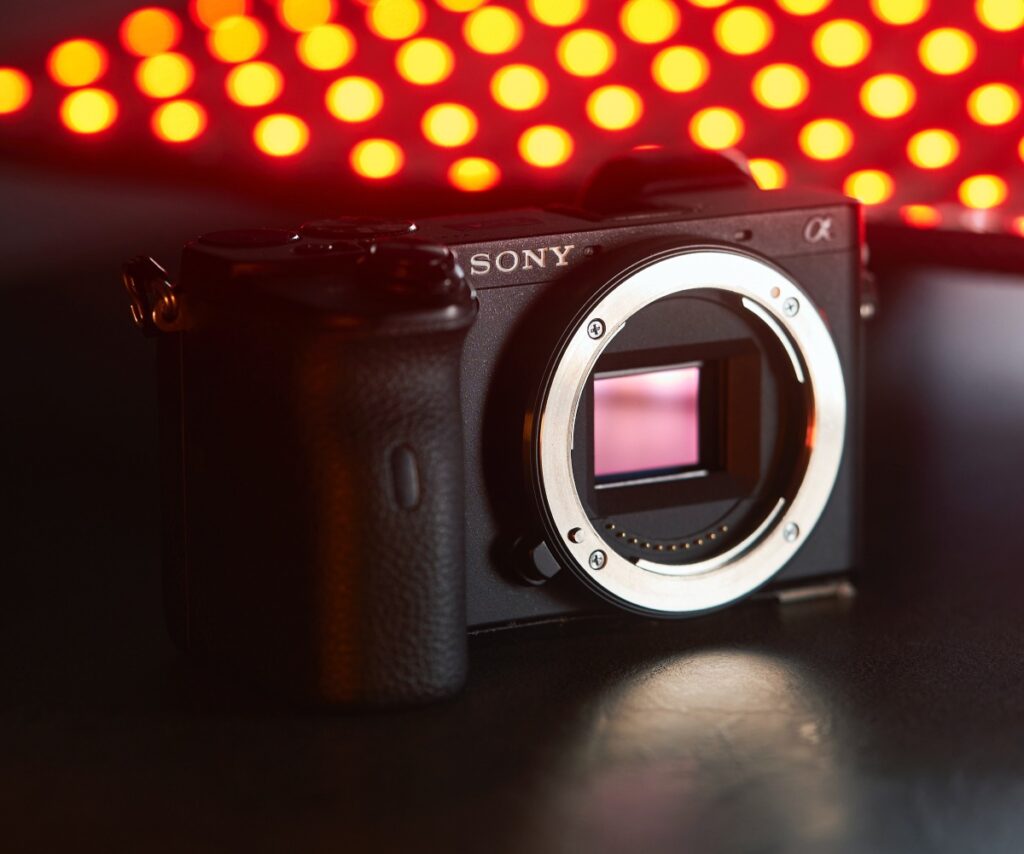
- Sensor: The sensor is the heart of the camera, replacing film in digital photography. It converts light into digital information, forming the image. Sensors come in different sizes, affecting image quality and low-light performance.
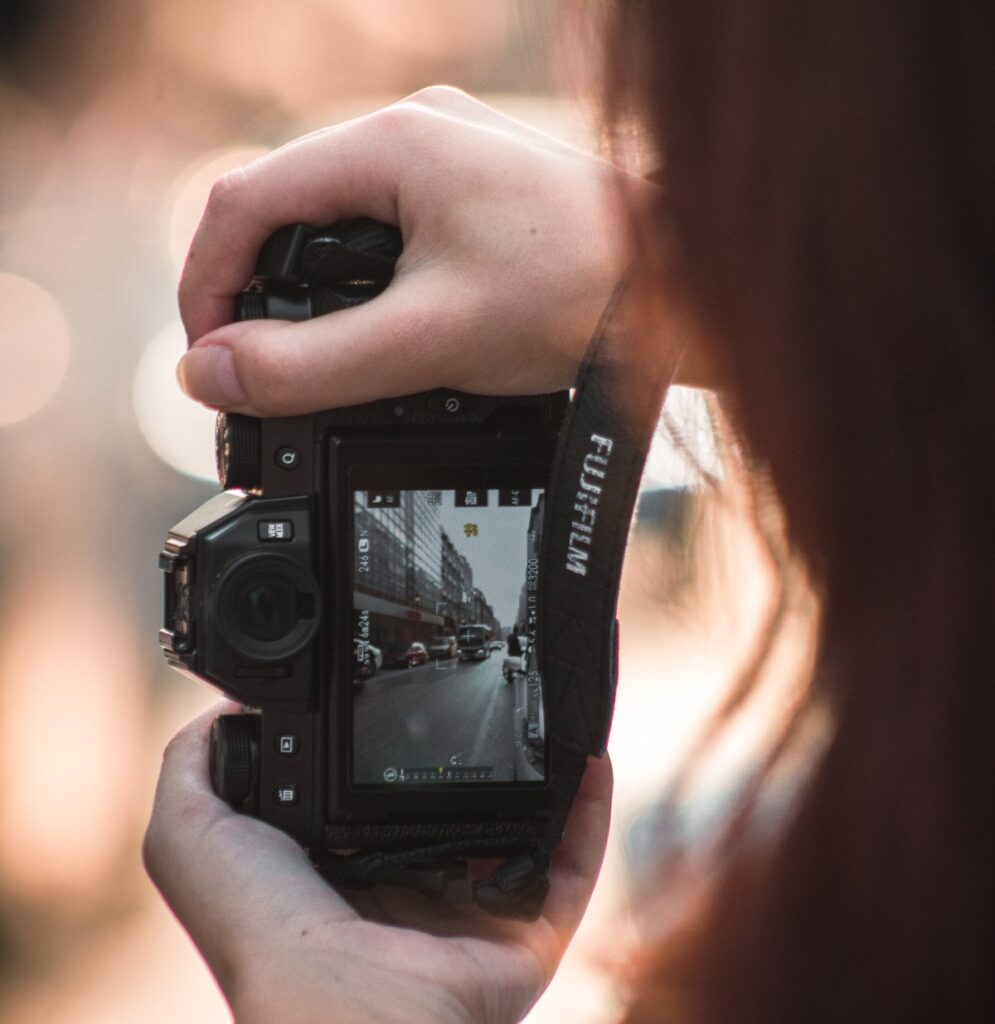
- Viewfinder or LCD Screen: The viewfinder (in DSLRs) or LCD screen (in mirrorless and compact cameras) helps you compose your shot. It’s like your camera’s window to the world, showing you what the sensor “sees.” Use it to frame your subject and get creative with your composition.
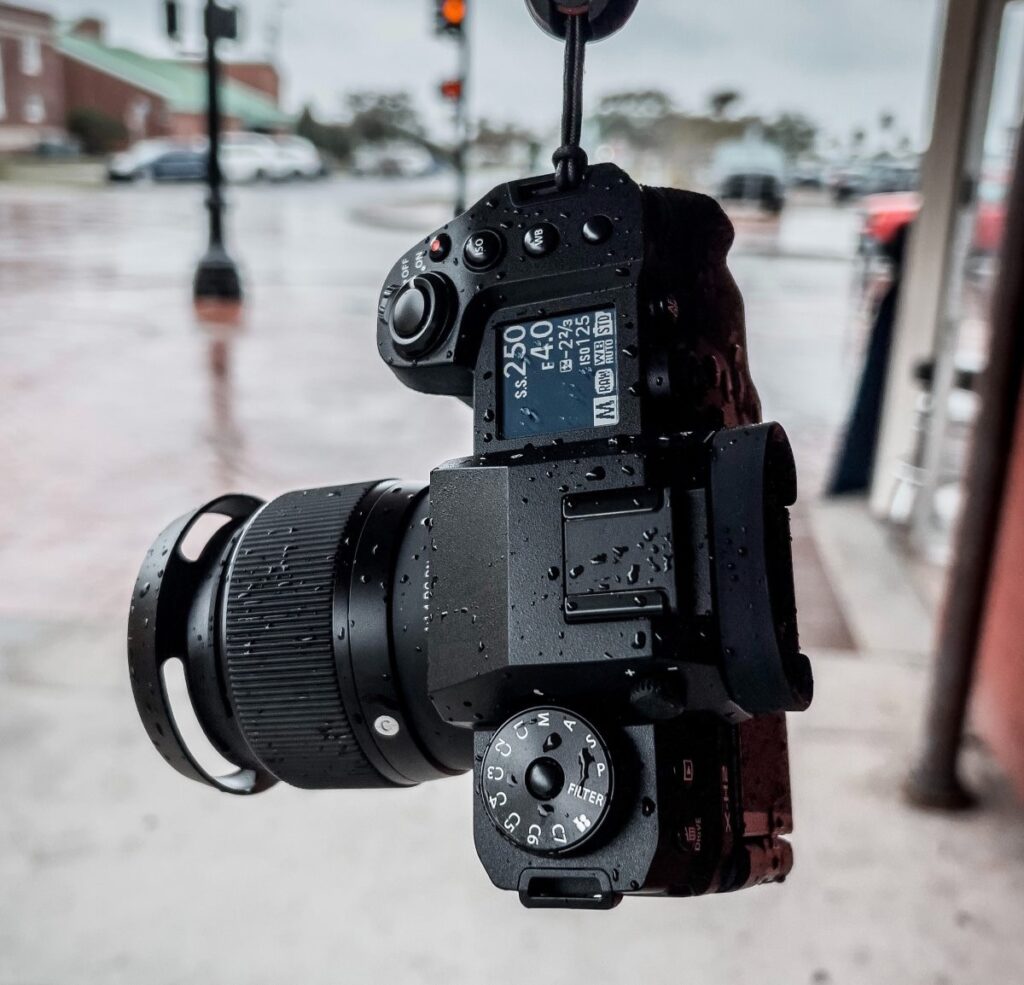
- Shutter Button: The shutter button is like the camera’s heartbeat. Press it to take a photo. Its located normally on the right side of the camera. It controls how long the sensor is exposed to light. A quick press freezes action, while a longer press captures movement.
- Mode Dial: The mode dial is like your camera’s brain. It lets you choose different shooting modes, such as Auto, Manual, Aperture Priority, and more. Each mode gives you varying levels of control over settings like aperture, shutter speed, and ISO. Depending on the brand it can be located in various parts of the camera. In the photo above its located on the left side of the camera (facing down).
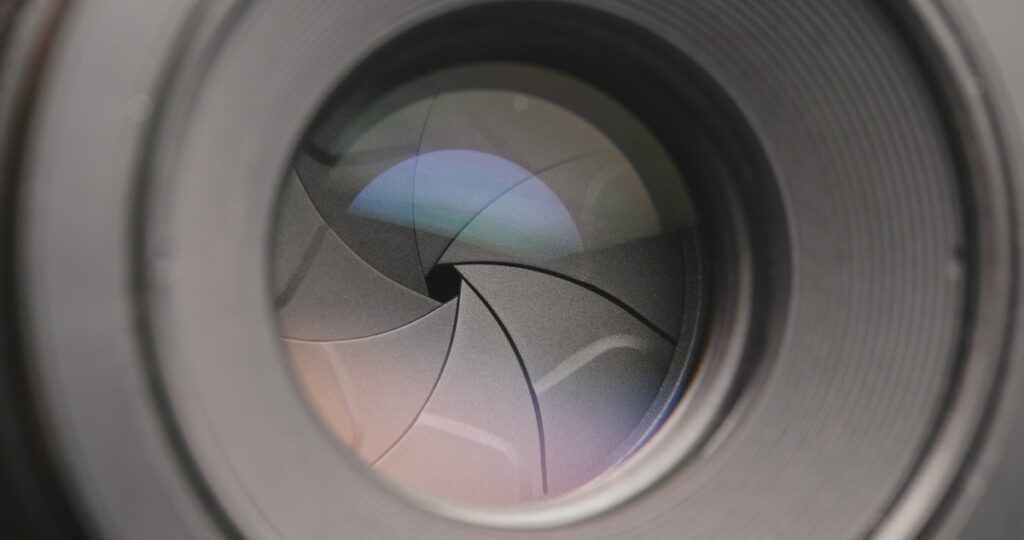
- Aperture: The aperture is like your camera’s pupil its located in the lens which opens and closes. It controls how much light enters the camera. A larger aperture (smaller f-number) lets in more light and creates a shallow depth of field, while a smaller aperture (larger f-number) lets in less light and keeps more of the scene in focus.
- Shutter Speed: Shutter speed is like the blink of your camera’s eye. It determines how long the sensor is exposed to light. Faster speeds freeze motion, while slower speeds capture movement as blur. Adjust it according to the effect you want.
- ISO Button or Dial: ISO is like your camera’s sensitivity setting. It affects how well your camera performs in low light. Lower ISO settings result in less noise (graininess), while higher settings help in darker conditions with the draw back of higher amount of noise.
- Focus Ring or Autofocus: The focus system is like your camera’s focus superpower. Manual focus lets you control focus yourself, while autofocus uses sensors to automatically lock onto subjects. Use it to ensure your subject is sharp and clear.
Understanding these camera components helps you take control of your photography. It’s like learning the keys on a piano – once you know how each part works, you can start composing beautiful melodies, or in this case, capturing stunning images through your eyes.
Camera Modes – Exploring Different Modes to Shoot
Your camera whether DSLR or Mirrorless offers a variety of shooting modes, each with its own purpose and level of control. Understanding these modes empowers you to capture photos that match your creative vision. Let’s dive into the most common camera modes.
Note that each camera brand may be different than illustrated here in the picture. Use your camera’s manual to locate each setting on your camera.
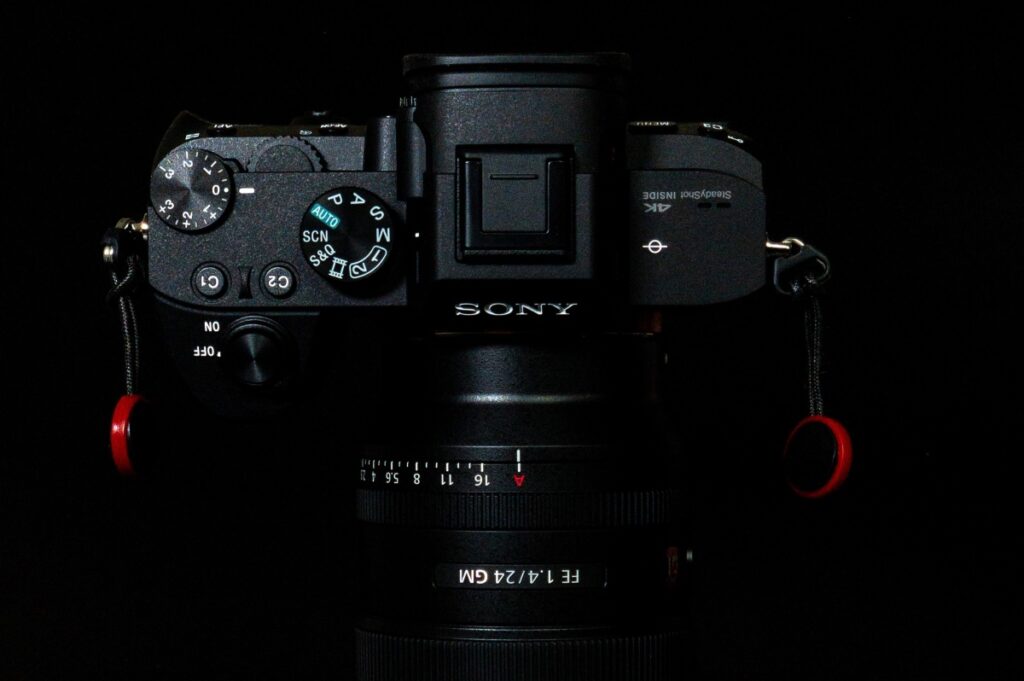
- Auto Mode: Normally the Green icon on the dial. Auto mode is like the “point-and-shoot” mode. The camera makes all the decisions for you – setting the aperture, shutter speed, and ISO. It’s great for beginners or when you want a quick snapshot without worrying about settings.
- Program Mode (P): Program mode is a step up from Auto. It still automates most settings but allows you to adjust certain things like exposure compensation, flash, and ISO. It’s handy when you want some control without diving into full manual mode.
- Aperture Priority Mode (Av or A): In this mode, you control the aperture while the camera adjusts the shutter speed and ISO to maintain proper exposure. Use it to control depth of field; a wide aperture (low f-number) for blurred backgrounds or a small aperture (high f-number) for sharp landscapes.
- Shutter Priority Mode (Tv or S): Shutter priority lets you set the shutter speed, and the camera adjusts the aperture and ISO. It’s excellent for capturing motion – fast shutter speeds freeze action, while slow ones create artistic blur.
- Manual Mode (M): Manual mode is your full control mode. You set the aperture, shutter speed, and ISO. It’s perfect for precise control over exposure and creative effects. But it requires a good understanding of how these settings interact. Which we will learn in the series.
- Bulb Mode (B): Bulb mode is for long exposures beyond the typical shutter speed range. When you press the shutter button, it stays open as long as you hold it. It’s used for astrophotography, light painting, and capturing other long-exposure effects.
- Custom or Scene Modes: Some cameras have custom modes or scene modes that optimize settings for specific situations like portraits, landscapes, sports, or night photography. These modes provide quick solutions for common scenarios.
- Creative Modes: Not all cameras have this feature. Creative modes often include settings like “Black n White,” “Film,” “Miniature,” and more. These modes adjust various camera settings to enhance specific features, such as blurring backgrounds in different modes or enhancing or desaturating the colors.
Understanding these camera modes is like having a toolbox of creative options. As you progress in your photography journey, you’ll find that different modes are suitable for different situations. Aperture Priority for dreamy portraits, weddings, Shutter Priority for action shots or blurred seascapes, and Manual Mode for full control over tricky lighting conditions or just to say you shoot in manual mode hehe.
Experiment with these modes to discover the incredible versatility of your camera. Don’t be afraid to step out of Auto mode and explore the world of creative photography that awaits you!

Summary
In our exploration of photography’s fundamental elements, we’ve uncovered the essential aspects of your camera that are crucial to mastering the art of photography.
Camera Types: We began by diving into the diverse world of camera types. Whether you’re wielding a DSLR, a compact point-and-shoot, or harnessing the power of your smartphone, understanding your camera’s capabilities is important. Each type offers unique strengths and suitability for different situations. Your choice of camera becomes the canvas upon which you’ll paint your photographic creations.
Camera Anatomy: Next, we dissected the camera’s anatomy. Like a mechanic who knows every part of the engine, knowing the intricacies of your camera’s components empowers you to craft precise, breathtaking images through your eyes. From the lens, which shapes your perspective, to the sensor that captures light, and the viewfinder or LCD screen that helps you frame your shots, each part plays a vital role. The shutter button, mode dial, and other controls give you the power to manipulate settings and unlock your creative potential.
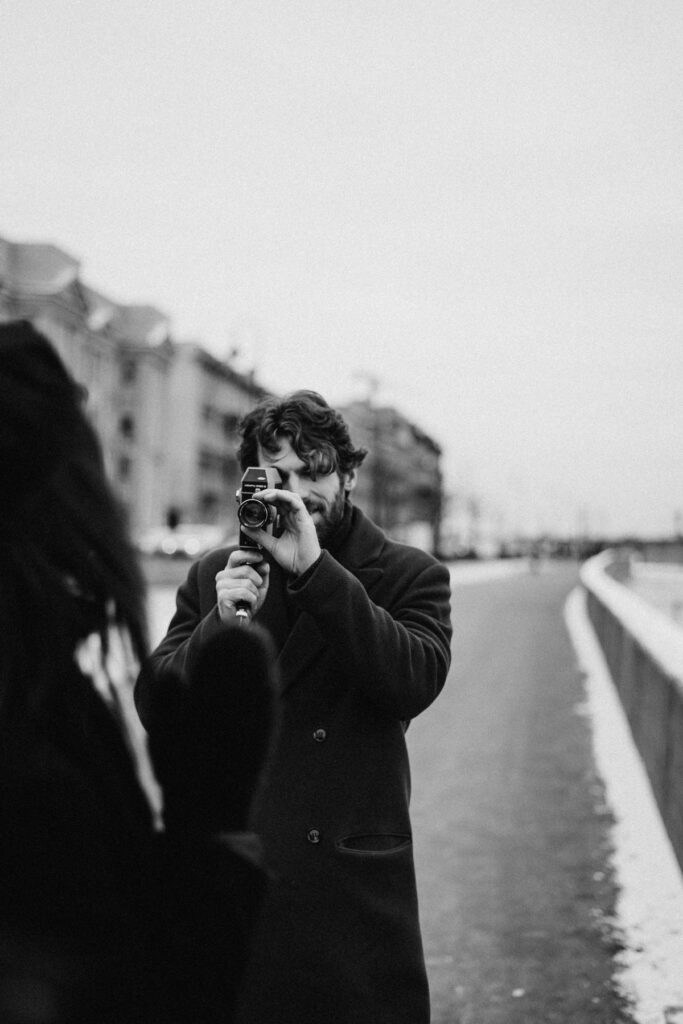
Camera Modes: Finally, we explored the various camera modes at your finger tips. These modes act as your toolkit, offering different ways to approach photography. Auto mode provides quick snapshots, while Program mode grants you some control. Aperture Priority lets you manage depth of field, Shutter Priority freezes or blurs motion, and Manual mode offers complete creative command. Special modes and scene modes cater to specific situations, while creative modes enhance certain features. Understanding these modes is crucial to your art, it can transform your camera into an instrument of artistic expression.
As you continue your photographic journey, remember that these elements are the foundation upon which you’ll build your skills. Each facet – from knowing your camera type to understanding its anatomy and mastering its modes – contributes to your ability to capture stunning images. With practice and creativity, you’ll transform these technical skills into breathtaking visual stories, each frame telling a tale of your unique perspective on the world. Embrace your camera as both a tool and a muse, and let your photographic adventure unfold.

